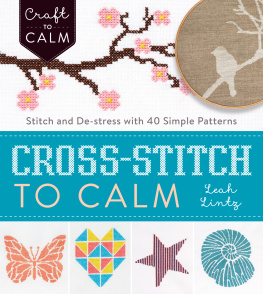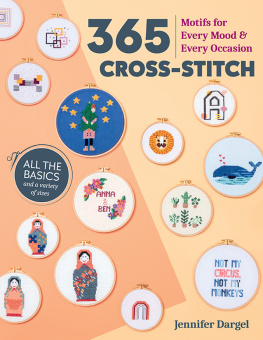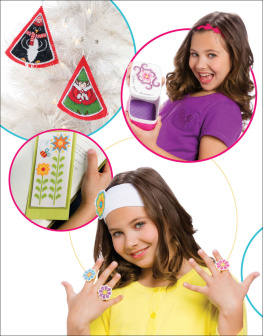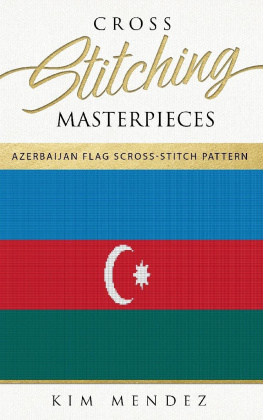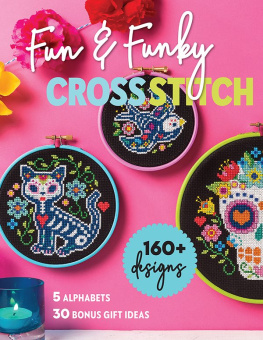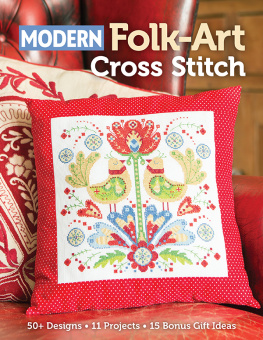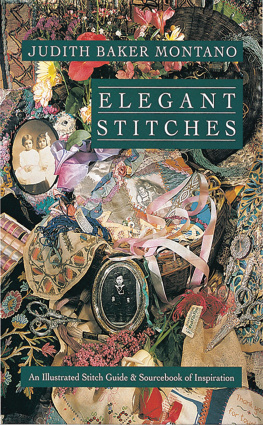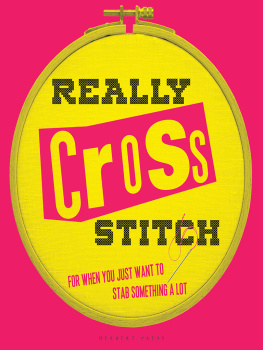Contents
Guide
Craft
to
CALM

Stitch and de-stress with 40 Simple Patterns
Leah Lintz

DEDICATION
I wish to personally thank the following people for making this book possible: Amelia Johanson, Erica Smith, Pamela Norman, Elisabeth Lariviere, and all the staff at F+W. Thank you for keeping me focused and believing that I could get those samples stitched!
A big thank you to Savannah Lintz who used her needle skills to stitch the Scallop Shell found in this book.
And last but not least, a huge thank you to my husband and children. You guys enable my addiction to cross-stitch!
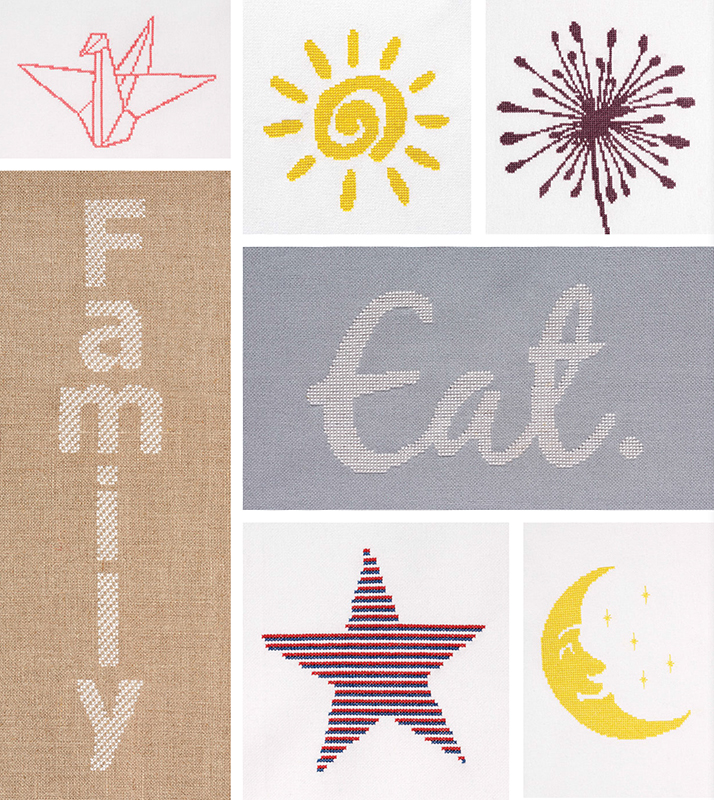

Contents
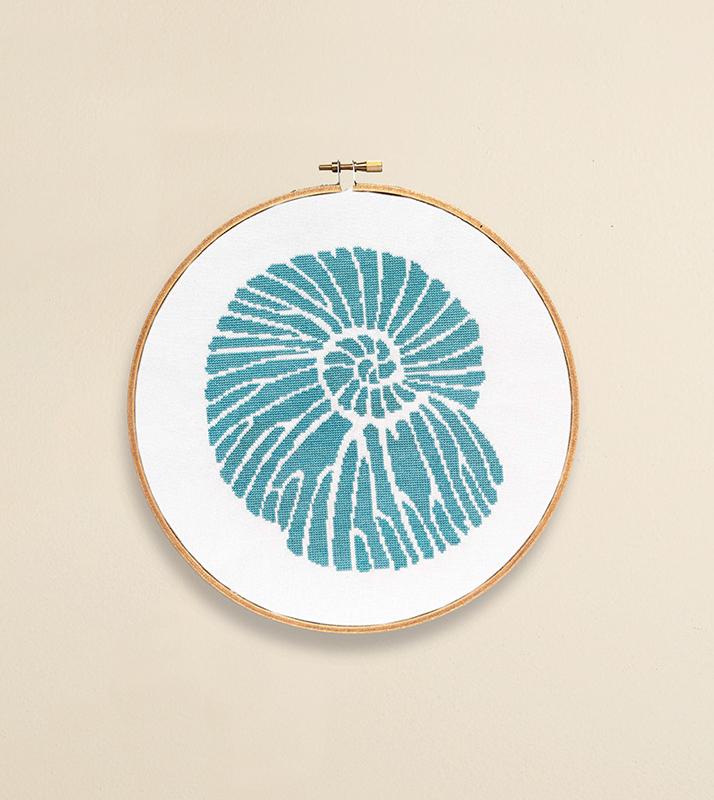
Introduction
I have always called cross-stitch my therapy and over the years have realized its not just my therapy, its widespread! Its a simple craft that keeps your hands busy but allows your mind to chill out.
My one frustration was due to a lack of cross-stitch patterns that suited my personal style. Frilly and cutesy are not to my taste! So I started to make my own patterns in a more bold, cheerful, graphic style, reflecting the themes that I adore--from the natural world (flowers, plants, animals) to keyphrases that reflect the best that life has to offer (family and eat, among others!)
Simple patterns look fabulous and elegant on your walls; and as a bonus, they dont take long to stitch. Most of the patterns in this book can be easily completed in a weekend. Also, colors can be simply changed to match your own stylish interiors.
So, cozy up and stitch away! Youve got lots of empty canvas to fill!

Tools & Materials
Cross-stitch is a simple craft involving fabric, thread, and a needle. Add a simple and pleasing pattern, and you have a relaxing and inexpensive hobby. Most of the patterns in this book have interchangeable colors that can be substituted to suit your taste and/or your stash of thread and fabric.
EMBROIDERY FLOSS
Each pattern in this book lists the relevant colors needed to complete each project. DMC 6-stranded thread is the chosen brand of thread used for this book and is the most widely available. When stitching, it is advisable to use an 18-inch (45.5 cm) or shorter length of thread, to avoid tangles and knots.
Only two strands of the 6-stranded thread are needed for the projects in this book. Separation of the thread is achieved by gently rolling the end of thread in-between your thumb and finger. This will separate the threads, and the two threads needed can be pulled gently away and threaded into the needle.

Six strands of embroidery floss, separated.
NEEDLES
Tapestry needles are blunt and have a large(ish) eye, making it easier to thread your strands.
Tapestry needles range in size, but for the purposes of this book, you only need one! All of the projects in this book require a size 26 needle.
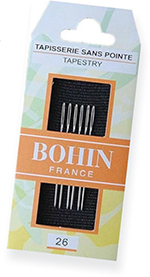
HPI, Gauge, & Count
HPI stands for holes per inch and also refers to the gauge or count of the fabric. The most popular cross-stitch fabric is 14-count, which means you will have 14 holes per linear inch. 18-count has 18 holes per inch, and so on. Therefore, the higher the count, the smaller the weave.
All of of the projects in this book have been stitched on 28-count evenweave fabric, but over two holes instead of one. As a result, even though the weave of the fabric is smaller, the resulting designs are equivalent in size to those done on 14-count fabric.
FABRIC
Cross-stitch fabric is readily available at local craft supply stores and can be as inexpensive as $2.99 for 12" 18" (30.5 45.5 cm) of fabric.
Evenweave
Evenweave fabric is fabric in which there are the same number of threads across the warp as across the weft. Generally, evenweave fabric is woven with a single thread; and when cross-stitching, two holes or threads need to be stitched across.
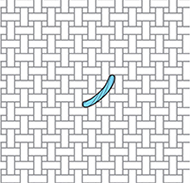
Evenweave
Aida
Aida is the most popular evenweave fabric for cross-stitch. This fabric is woven with threads grouped into bundles, forming little spaces that are easy to see.
Aida is great for beginners, as the fibers are specially woven to create a square grid which is easily visible.
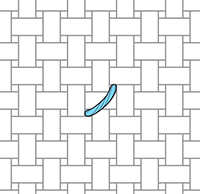
Aida
Linen
Linen is a gorgeous fabric to look at once a project is stitched, but a bit more challenging for a beginner, as the fibers are closer together (28-count or 32-count) and therefore harder to see correctly (well, at least for this aging stitcher!).
EMBROIDERY HOOP
An embroidery hoop can be a useful tool for keeping your fabric taut while stitching. Its not essential, though; even if you dont use one, the fabric will still stay even as you stitch.
Hoops are also a great tool for displaying the finished piece. Just nail a hole in the wall and hang it right up!
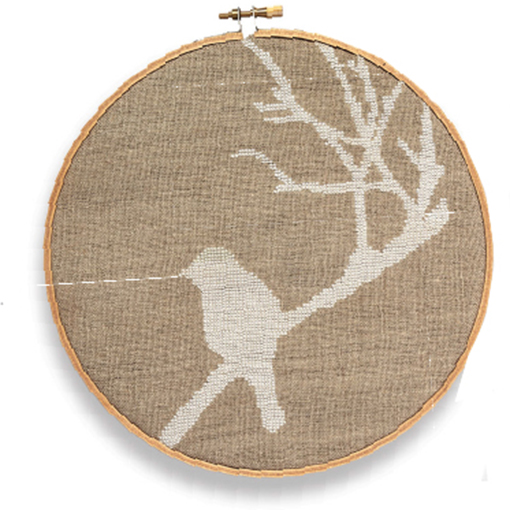
STARTING YOUR PROJECT
Reading your chart
Each square of your chart represents one complete cross-stitch and contains a symbol and color that corresponds to the thread color in the accompanying symbol/color key.
Working the chart
Its advisable to start working from the center of the chart and fabric so that your finished project is centered. Each pattern comes with a suggested amount of fabric to ensure you have at least 2" (5 cm) all the way around the piece for finishing.
- Find the center of your chart: Black triangles are on the top and left side of your chart. You can find the center of the chart by extending lines outward from the triangles and observing where they intersect.
- Find the center of your fabric. An easy way to find the center of your fabric is to fold the fabric in half vertically and pinch along the fold. Unfold the fabric. Next, fold your fabric horizontally and pinch along the fold. Open the fabric up and the two pinched folds will cross in the middle of your fabric.

